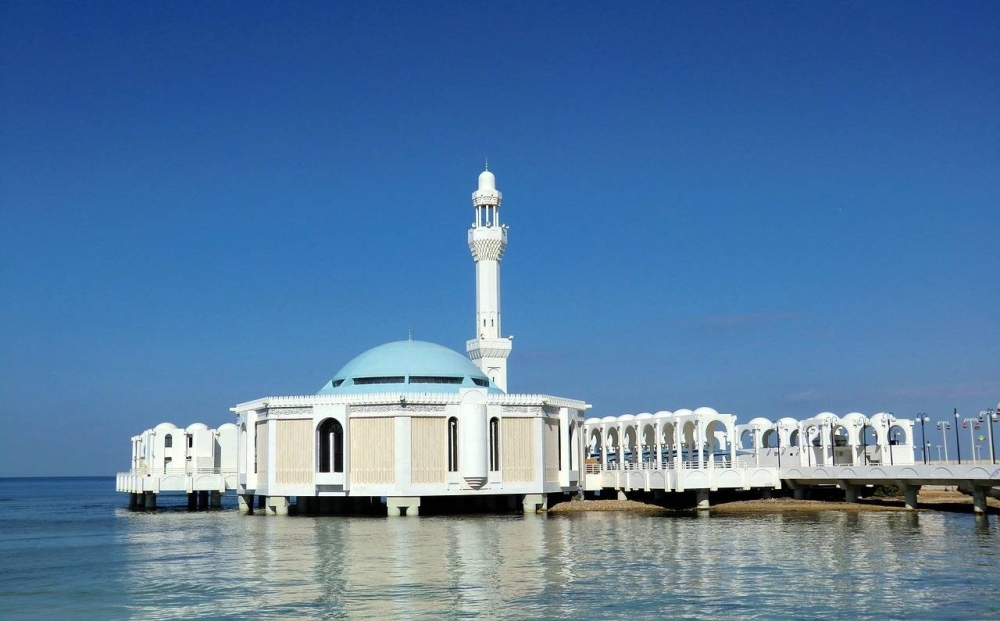First islamic arts biennale enthrals visitors
22 May 2023 08:50am

Jeddah, picture for illustrative purposes - FILEPIC
A
A
A
Visitors cannot help but be mesmerised by the uniqueness and exquisiteness of the black silk cloth that is draped over the Kaabah, the sacred building located at the centre of Masjid al-Haram in Makkah.
It is believed that the Kiswah is composed of 47 pieces of natural silk featuring designs embroidered with gold thread. Around 670 kilogrammes of raw silk was used to stitch the outer layer of the Kiswah, protected from damage by a sturdy cotton liner under the cover.
Set to be held once every two years, the venue for the inaugural Islamic Arts Biennale - hosted by the Diriyah Biennale Foundation (DBF) and organised with the assistance of Saudi Arabia’s Ministry of Culture - was the Western Hajj Terminal of the King Abdul Aziz International Airport in Jeddah.
More than 300 artefacts representing the pride of the Islamic civilisation are displayed over 12 square kilometres of exhibition space that includes five galleries and two pavilions.
ANCIENT ARTEFACTS
The artefacts, brought in by more than 40 international institutions, include some intriguing ones like the 30 leaves of parchments containing the earliest versions of Quranic scripts which are thought to have been written more than a thousand years ago.
Another interesting artefact is the hardwood Quran box (rab'ah) produced by Hasan Qutlubak, which is thought to be a rare survivor from the first half of the eighth or the fourteenth century. Other exhibits include ancient brass candlesticks, dated 1317-1318, that were made in Iraq and intended for the Prophet's mosque in Madinah.
Said DBF chief executive officer Aya Al Bakree: "When we began planning for this extraordinary first-of-its-kind exhibition, we knew that it required a new way of thinking about the contribution that Islamic art has made to creativity on a global scale, and about the diversity and nuances of the Muslim experience throughout history until the present day.
"Regional and global institutions at the forefront of collecting some of the most precious and never-exhibited-before objects have contributed profoundly to this biennale and particularly to our special exhibition ‘Al-Madar’ (The Orbit) which highlights the important roles that these institutions have played in both preserving and promoting cultural heritage.”
Sumayya Vally, artistic director of the Islamic Arts Biennale and one of the four members of its curatorial team, said the exhibition’s theme, "Awwal Bait” (First House), refers to the First House of Allah, that is, the Holy Kaabah in Makkah which is the most sacred site in Islam and the direction in which Muslims all around the world pray no matter where they are.
"We selected this special theme to demonstrate to the world how the Kaabah itself unites Muslims, tying them spiritually together and fostering a strong sense of community.
"The biennale has been divided into three distinct sections in order to enable visitors to fully understand the main theme. The first section is about the Qiblah or the direction (in which Muslims pray) and is exhibited in the galleries. The second section is Hijrah and is displayed in both pavilions. The third section is Al-Madar, a cutting-edge platform that enables the integration and connection of institutions and collections worldwide," she explained.
UNIFYING MUSLIMS
Visitors to the biennale have the privilege of viewing the Kaabah's original wooden column - displayed in one of the galleries - which was constructed in the year 683 during the reign of Abdullah Al-Zubair, the leader of an Islamic caliphate.
The column is made of solid teak and was one of the three interior columns of the Kaabah that supported its lower ceiling. It is amazing that even though it is over 1,300 years old, the column still looks new.
Various artworks from contemporary Islamic artists such as M'barek Bouhchichi and Beya Othmani are also on display at the galleries.
Meanwhile, the two pavilions - Makkah Al-Mukarramah and Madinah Al-Munawwarah pavilions - feature various historic materials from the two holy mosques, namely Masjid al-Haram in Makkah and Hujra Al-Sharifah (Prophet Muhammad's tomb) in Madinah.
Dr Julian Raby, curator at the Islamic Arts Biennale and director emeritus of the National Museum of Asian Art, Smithsonian Institution in Washington DC, said the collections exhibited at the pavilions also give visitors a glimpse into the past and present of the "Haramain” (the two holy cities of Makkah and Madinah).
"We wanted to reflect on the first voyage Prophet Muhammad and his legitimate followers made from Makkah to Madinah as well as the way the Hijrah signifies the start of the Islamic epoch namely the Lunar Hijri calendar.
"In these pavilions, we also wanted to celebrate how the haj pilgrimage has coloured the cultural life of the Hijaz, a region in the west of Saudi Arabia, as millions of pilgrims from all over the world have brought and continue to bring their own practices, customs, cuisines and colours to Jeddah and the Haramain," he said.
Among the artefacts exhibited in the Madinah pavilion is the padlock for Prophet Muhammad's tomb which was made in the 17th century.
At the Makkah pavilion, visitors can get to witness one of the original Kaabah doors, made in either Istanbul or Cairo and dated 1635-1636; as well as the Hizam, an embroidered belt that ringed the Kaabah.
Measuring 102.5cm by 673cm and fashioned from silk, cotton and metal thread, the Hizam has Quranic inscriptions large enough for pilgrims to read from a distance - BERNAMA














